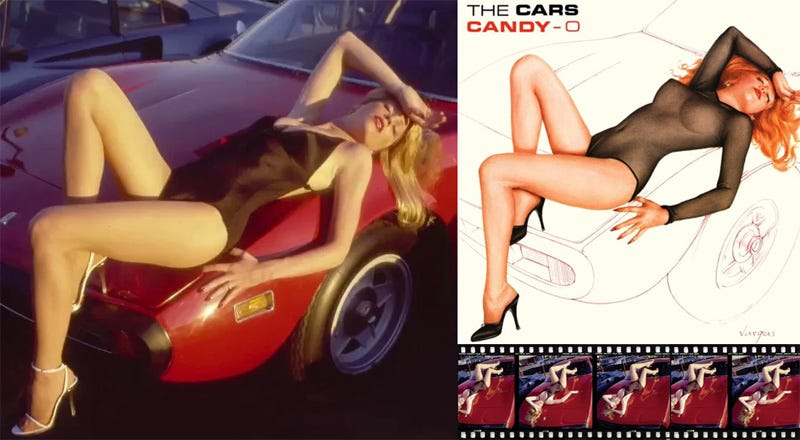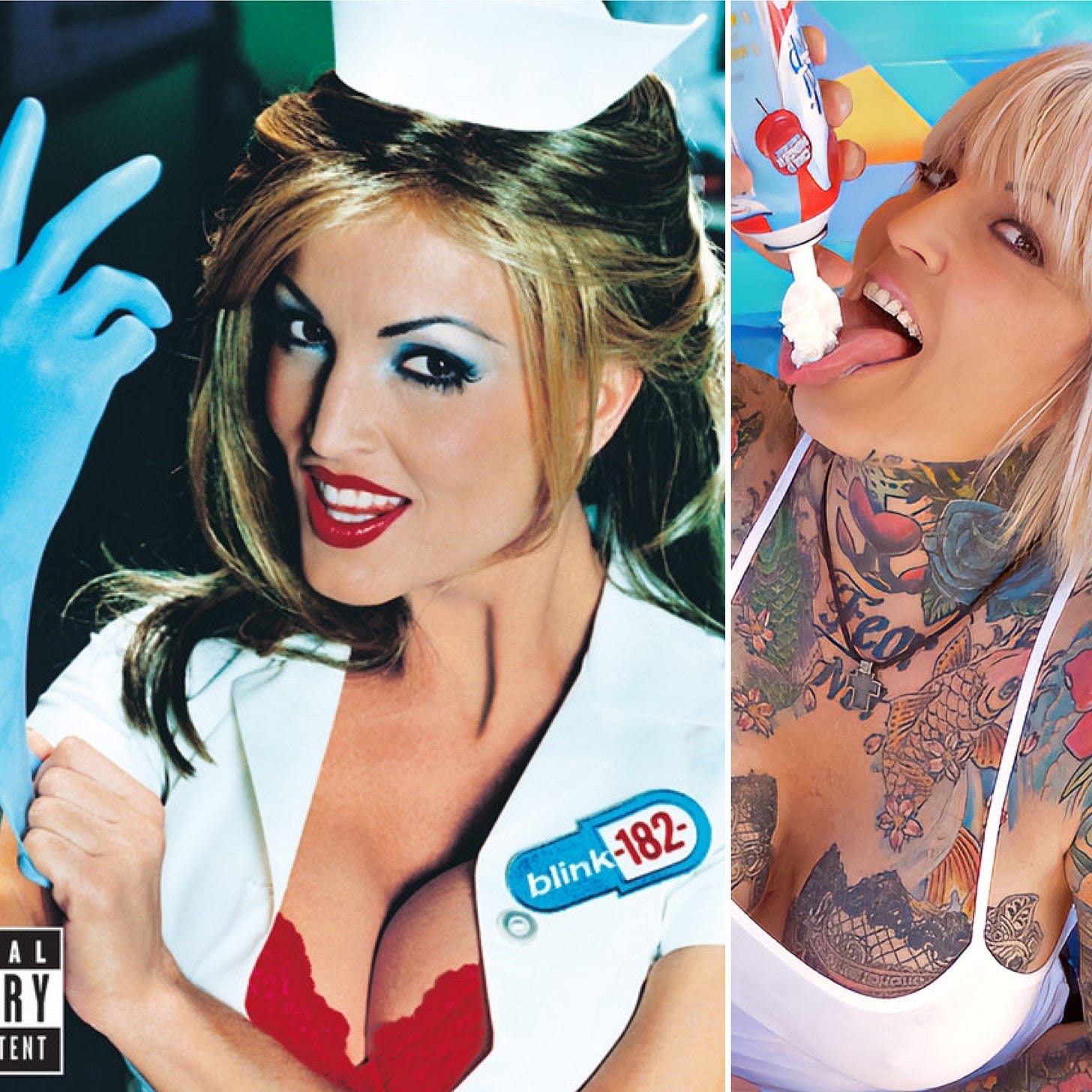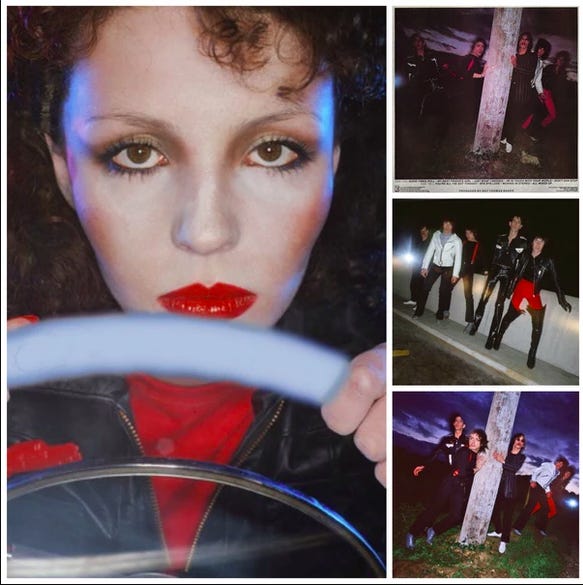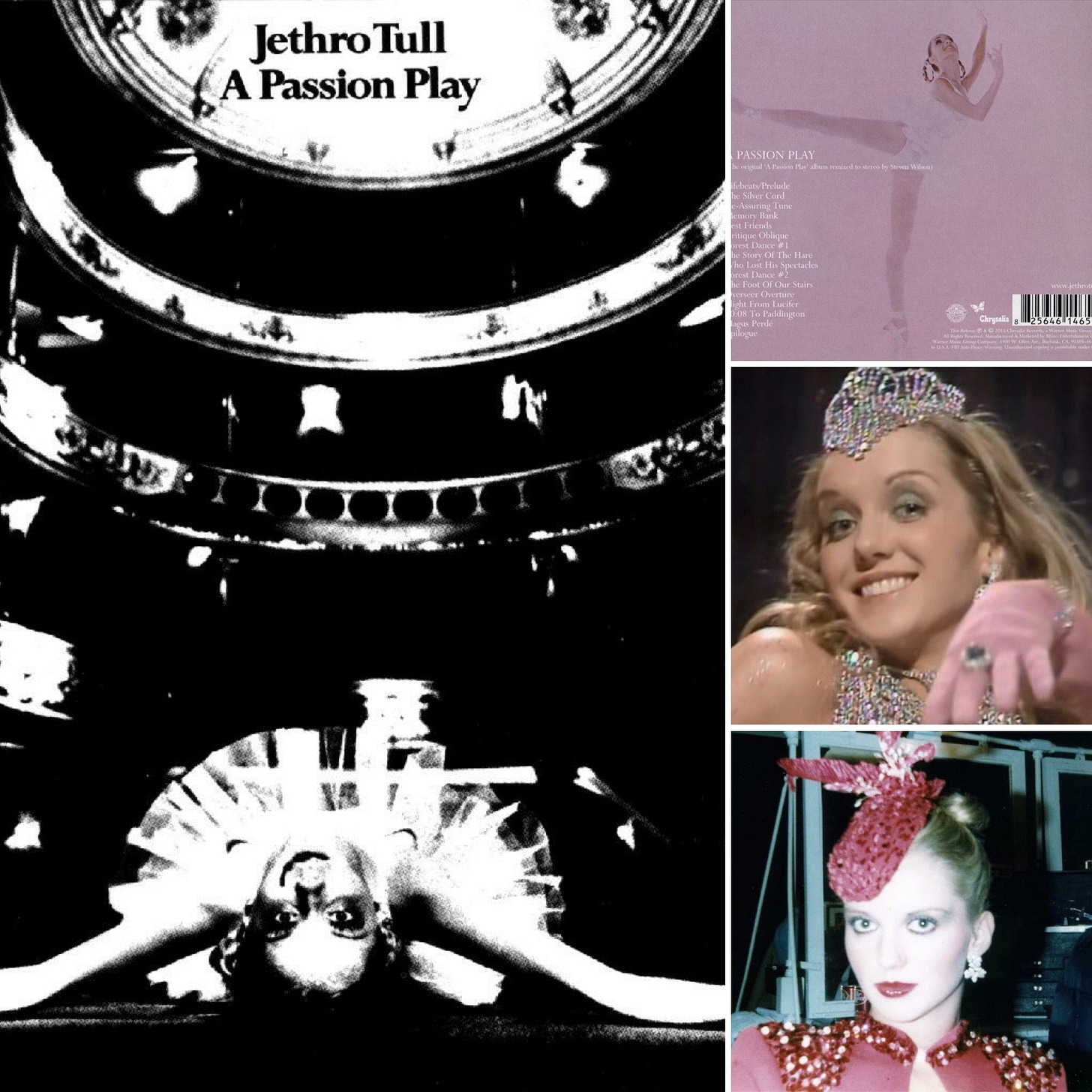The Girl on the Album Cover: When Beauty Met the Beat, Part 2 of 4
Model Muses Who Changed Music History
In Part 1 of this series, I explored the fascinating women who graced the album covers of The Ventures—starting with my mom, Nancy Bacon, whose appearance on “Walk Don’t Run ’64” led to a Vegas wedding with my dad, rhythm guitarist Don Wilson. What can I say? I come by my obsession with album cover girls honestly—it’s literally in my DNA. I was born between the A and B sides of their relationship.
Having grown up with a living room wall featuring my own mother in pedal pushers and kitten heels (totally practical surfing attire!), I developed an early appreciation for these models who sold millions of records with just one perfectly posed photograph. These women weren’t just pretty faces; they were marketing mavens who never got a percentage of sales despite being the primary reason teenage boys emptied their wallets at record stores nationwide. They were the original influencers before Instagram, getting all the likes but none of the sponsorship deals.

So let’s drop the needle on part two of our four-part journey through vinyl history with some of my other favorite album cover girls—the ones whose glossy images defined musical eras and have stories more fascinating than many of the albums they adorned. Because behind every great album is a woman who made you pick it up in the first place!
Janine Lindemulder: Blink-182’s “Enema of the State”
Nothing says “late ‘90s pop-punk” quite like the naughty nurse on Blink-182’s breakthrough album. The woman holding the glove with the suggestive smile was Janine Lindemulder, who played that same nurse chasing the naked band members in their “What’s My Age Again?” video. While her uniform suggested she might help cure what ailed you, Janine was already well-known for a different kind of bedside manner as a successful adult film actress. Talk about giving new meaning to “take two of these and call me in the morning”!
Janine’s career hit more high notes than Tom DeLonge’s vocals—from Penthouse Pet (December 1987) to porn star to album cover icon to Hollywood adjacent (her marriage to TV personality Jesse James ended in 2004). And like many album cover girls, she proved she was much more than just a foxy face, penning stories for adult magazines and even writing her own comic book story for Carnal Comics’ “True Stories of Adult Film Stars.” She was spreading her X-rated talents around more than a DJ at an all-request radio hour.
Fun Fact: Janine made a cinematic appearance in 1997 alongside Howard Stern in “Private Parts” before donning the nurse’s uniform for Blink-182. In a strange twist of career evolution, she announced her retirement from adult films in 1999—right when “Enema of the State” was released—saying she wanted to become a kindergarten teacher. That retirement didn’t last, but the image of Nurse Janine remains burned into the memory of every ‘90s teenager who ever owned a pair of cargo shorts and pretended they needed a medical consultation.
Twiggy: David Bowie’s “Pin Ups”
When fashion royalty meets rock royalty, magic happens faster than you can say “ch-ch-ch-changes.” The iconic 1973 photoshoot featuring supermodel Twiggy and David Bowie resulted in one of music’s most memorable covers. The striking image shows Twiggy’s head resting on Bowie’s shoulder, both sporting the same vibrant makeup and colored hair—a perfect visual duet of Bowie’s gender-bending glam rock symphony.
The photo was originally composed for Vogue magazine, but the editor refused to put a man on the cover (oh, the horror!). Bowie, ever the marketing maestro, saw the perfect opportunity and nabbed it for his “Pin Ups” album instead. This collaboration wasn’t just a random pairing—Bowie had name-dropped Twiggy as “Twig the Wonder Kid” in his song “Drive-In Saturday,” cementing their relationship before they’d even met. Twiggy described hearing her name in a Bowie song as “the thrill of my life”—which in the modeling world is saying something, considering she’d already been on approximately half the magazine covers published in the 1960s.
Fun Fact: Twiggy once recalled her excitement upon first hearing Bowie mention her name in a song, saying she “rushed to the record shop but didn’t know the name of the song, so I started singing it.” Can you imagine being a record store clerk while THE Twiggy stands there singing Bowie lyrics to you? That poor clerk probably still leans on this note in conversation decades later: “Did I ever tell you about the time Twiggy came in humming ‘Drive-In Saturday’ and I nearly fell off my platform shoes?”
Natalya Medvedeva: The Cars’ Self-Titled Debut
The striking woman behind the wheel on The Cars’ 1978 debut album wasn’t just a random model—she was Natalya Medvedeva, a Russian émigré with a fascinating life story that deserves its own concept album. After leaving Leningrad at age 17, she settled in Los Angeles, where she posed for Playboy and landed the now-iconic album cover gig that would immortalize her as the girl of The Cars (that’s called driving your career in the right direction).
But Medvedeva wasn’t just idling in the modeling lane. She was a poet, writer, and musician who married controversial Russian writer Eduard Limonov and later became a cultural figure in her own right. After stints in the U.S. and France (where she sang in piano bars and wrote for French magazines), she returned to Russia in 1994 and formed her own band called Tribunal. She went from cover girl to frontwoman—shifting gears from being looked at to being listened to. Sadly, Medvedeva’s final track came too soon when she died of a heart attack in 2003 at just 44 years old.
Fun Fact: Despite her success in America, Medvedeva was openly critical of the U.S. fashion industry and American lifestyle, publishing a book titled “Hotel California” in 1987 that condemned both. She checked out of the metaphorical Hotel California despite the Eagles’ warning that “you can never leave.” Her list of admirers reportedly included Russian pop diva Alla Pugachyova and Channel One head Konstantin Ernst, who produced her first music video—proving her star power had no borders.
Jane Colthorpe: Jethro Tull, “A Passion Play”
The model who graced Jethro Tull’s “A Passion Play” album cover as a ballet dancer, actually was a ballet dancer—so meta. Jane Colthorpe got the modelling gig after answering an ad she saw tacked to a bulletin board, sandwiched between “Guitar Lessons: Learn to Play Like Hendrix in Just 3 Easy Payments” and “Lost Cat: Answers to ‘Whiskers’ or ‘Stevens’.” After posing for the progressive rock concept album (a record so complicated that music critics needed to form study groups just to review it), she joined The Love Machine dance troupe, becoming a regular on “The Benny Hill Show”—where the chase scenes provided better cardio workouts than modern Peloton classes. Jane then strutted her stuff with Hot Gossip on “The Kenny Everett Show,” wearing outfits that contained approximately 3.7 square inches of fabric total. She was essentially wearing the 1970s equivalent of dental floss with sequins, yet somehow managed to pull off dance moves that would send today’s Instagram influencers straight to physical therapy.
Fun Fact: Jane went on to shake up the entertainment world under the name Jane Eve. Her fancy footwork landed her roles in Village People’s “Can’t Stop the Music” (a film so gloriously campy it makes RuPaul’s Drag Race look like a documentary about tax accounting) and Monty Python’s “The Meaning of Life” (where she likely had to explain to her parents that yes, this was technically considered “legitimate theater”). She eventually pivoted to directing and teaching dance, presumably after realizing that gravity and aging knees are cruel dance partners. Most people’s LinkedIn profiles show job-hopping between insurance companies—Jane’s reads like a documentary about the golden age of British entertainment with extra glitter.
Lisanne Falk: Foreigner’s “Head Games”
The controversial cover of Foreigner’s 1979 album “Head Games” featured a young woman looking startled in a men’s restroom, seemingly caught in the act of—well, that was the controversy that had more interpretations than a Bob Dylan lyric. The woman was actually actress Lisanne Falk, who would later gain fame for her role as Heather McNamara in the cult classic film “Heathers” (1988), trading bathroom shock for high school murder.

The cover art was widely criticized by feminists for showing what appeared to be a frightened teenage girl in a men’s bathroom, possibly using a urinal—not exactly the kind of crossover hit the band was looking for. According to Foreigner’s lead singer Lou Gramm, the cover was meant to be “cute, like a cartoon,” with the girl caught in the act of erasing graffiti. Atlantic Records even attempted to explain it away by claiming “head is a naval term for bathroom” and that the girl was “shocked by the graffiti” rather than being threatened. That explanation didn’t fly.
Fun Fact: The model in the controversial photo, Lisanne Falk, was born December 3, 1964, making her only about 14 years old at the time of the photoshoot. This fact only added to the creep-factor years later when the band’s explanations were reconsidered—aging about as well as disco fashion. The cover remains one of rock’s most questionable marketing decisions—proving that sometimes, even in the anything-goes ‘70s, sex didn’t always sell in the way record companies intended.
ICYMI: Here’s Part 1. Stay tuned for Parts 3 and 4 of my “Album Cover Girls” series.









Absolutely fantastic trainspotting. Wow. Living with some of these covers all over my brain for so very long this was a gas to read.
I loved this post! And I agree that it's kind of funny to look back on how people reacted then vs. now. It does remind us in some ways how far we've come, I guess...